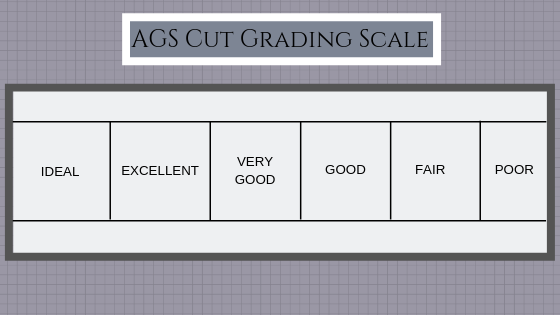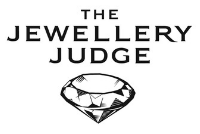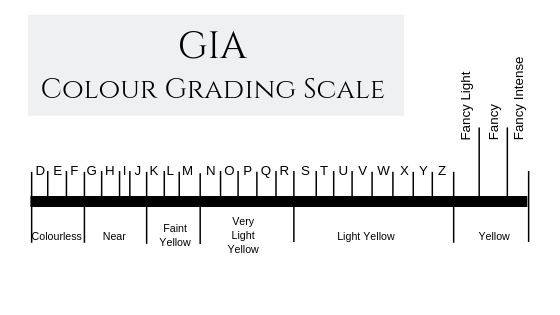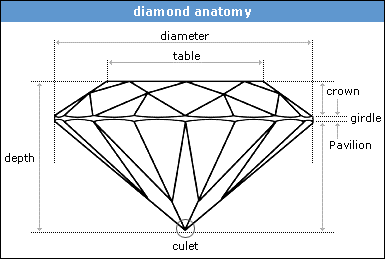Diamond Grading Factors
Colour
The diamond colour evaluation of most gem-quality diamonds is based on the absence of colour. A chemically pure and structurally perfect diamond has no hue, like a drop of pure water, and consequently, a higher value. GIA’s D-to-Z diamond colour-grading system measures the degree of colourlessness by comparing a stone under controlled lighting and precise viewing conditions to masterstones of established colour value.
Many of these diamond colour distinctions are so subtle that they are invisible to the untrained eye; however, these distinctions make a very big difference in diamond quality and price.
Cut
Diamonds Shapes
Many gemologists consider cutting quality to be the most important diamond characteristic because even if a diamond has perfect color and clarity, a diamond with a poor cut will have reduced brilliance. Cut is not shape, ie, pear, round, oval. Cut refers to the quality of the proportioning, polish, and symmetry.


Clarity
Clarity refers to how free a diamond is from nature’s “birthmarks,” or tiny, generally microscopic imperfections that make each diamond unique.
Diamonds are assigned clarity grades based on what can be detected with ten-power magnification. Most internal features (inclusions) and external features (blemishes) in the diamond have little or no effect on brilliance and fire. So if small clarity characteristics don’t affect a diamond’s beauty, why are diamonds with higher clarity grade so expensive? It’s simply because diamonds with relatively few clarity characteristics are very rare. Fortunately, diamonds of all clarity grades and prices, including those with eye-visible inclusions, can look beautiful depending on how well they’re cut and other factors. The best advice is to look at several diamonds of different clarity grades and let your eye be the guide! These charts will provide the definition of clarity grades and give you some idea of how clarity grades compare to one another. Remember, trained professionals perform clarity grading under ten-power binocular magnification and the average person would have a harder time locating clarity characteristics.

Carat Weight
Carat is the unit of measurement used to describe the weight of the stone. In many gemstone varieties the larger stones are valued significantly higher due to the rarity of these stones compared to the smaller stones of the same quality. Carat is a unit of weight. It takes 5 carats to equal 1 gram; so as an example, a 5 carat diamond equals 1 gram in weight.
Diamond Treatments
Diamonds may be subjected to various treatments to improve their appearance. Treatments used are considered usual and customary practices when properly disclosed and when done without intent to defraud the consumer. Treatments found may be laser drilling, fracture filling, high temperature and pressure (HTHP) to improve colour, or irradiating (to attain fancy colour). Any treatments found will be noted on the appraisal report. The Federal Trade Commission requires the disclosure of fracture filling and irradiation. Although laser drilling is currently not required to be disclosed, it should still be disclosed and failure to do so may still be considered deceptive to the consumer.









